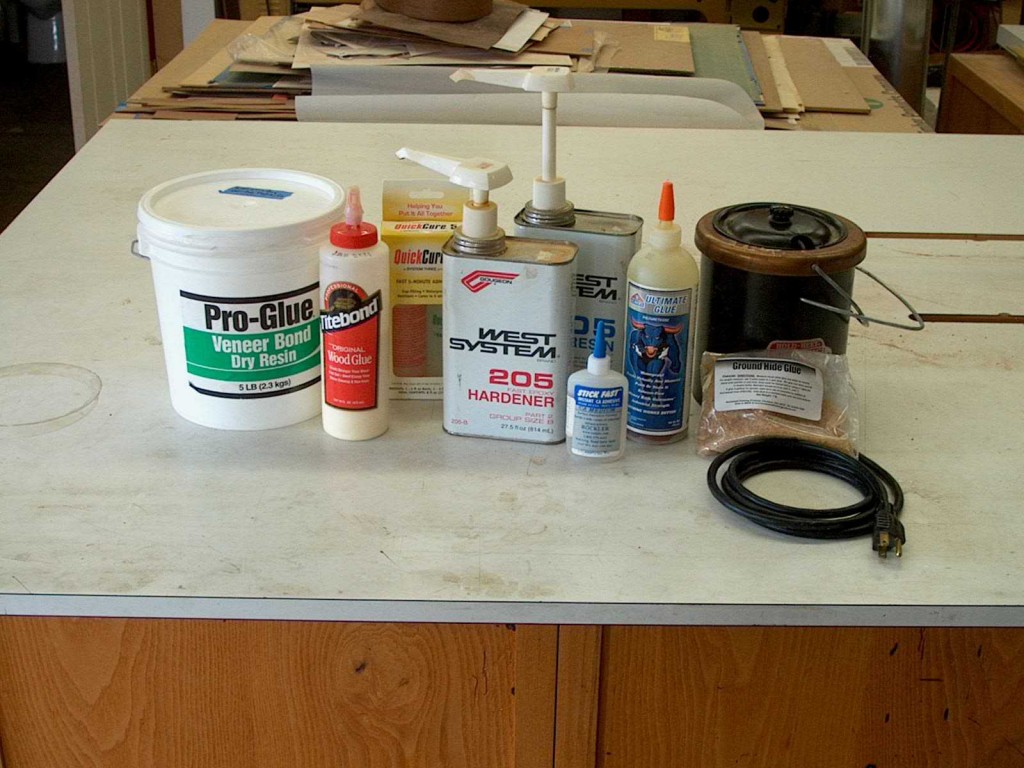 There are a number of common adhesives for woodworkers. The two I use most often are plastic resin for veneering and hot hide glue for solid wood. Occasionally I will use yellow glue for special situations, epoxy tinted with fresco powders to fill small defects, and expect to use cyanoacrylate as I explore wood turning.
There are a number of common adhesives for woodworkers. The two I use most often are plastic resin for veneering and hot hide glue for solid wood. Occasionally I will use yellow glue for special situations, epoxy tinted with fresco powders to fill small defects, and expect to use cyanoacrylate as I explore wood turning.
There are several key fundamentals for strong glue joints. When these are not followed, joints are much more likely to fail.
First, all adhesives must be used as intended by the manufacturer. As examples, yellow glues skin over quickly, so joints must be assembled and clamped quickly; plastic resin glues need a minimum temperture of 70 degrees F to cure.
Second, glues need to be thoroughly brushed onto mating surfaces. Applying a bead of glue to the end of a tenon and assembling the joint is very fast, but the adhesive bond is minimal. Thoroughly brushing glue onto the sides of a mortise and inserting a dry tenon is an improvement, but still risks premature joint failure. Excess glue squeezeout can create dreaded “glue stains” that interfere with staining, but is not caused by brushing glue on all surfaces. It is caused by applying too much glue.
Third, joints have to be well made. When edge gluing two boards, those edges need to be flat and straight over their entire lengths. Mortise and tenon and dovetail joints should be a “friction fit” meaning slight pressure is needed to assembly and disassemble the dry joints.
Fourth, adequate clamping pressure has to be applied in a timely fashion until the adhesive cures.
When a joint fails prematurely, take a look at the mating surfaces to see if the joint was well made and the mating surfaces show dried glue over the majority of their meeting surfaces. Do not simply apply more glue and re-assemble without first properly preparing the joint.
